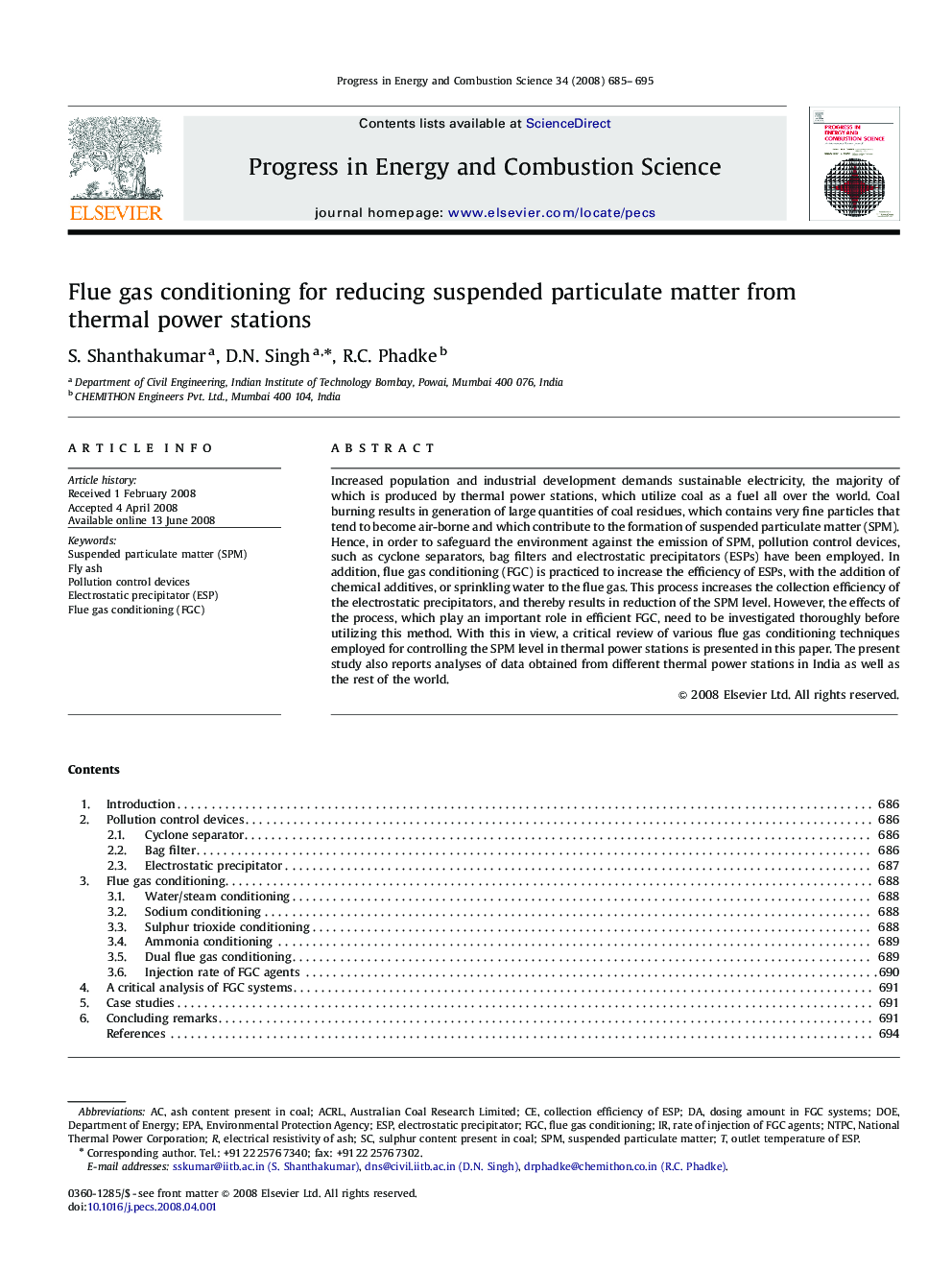| Article ID | Journal | Published Year | Pages | File Type |
|---|---|---|---|---|
| 241813 | Progress in Energy and Combustion Science | 2008 | 11 Pages |
Increased population and industrial development demands sustainable electricity, the majority of which is produced by thermal power stations, which utilize coal as a fuel all over the world. Coal burning results in generation of large quantities of coal residues, which contains very fine particles that tend to become air-borne and which contribute to the formation of suspended particulate matter (SPM). Hence, in order to safeguard the environment against the emission of SPM, pollution control devices, such as cyclone separators, bag filters and electrostatic precipitators (ESPs) have been employed. In addition, flue gas conditioning (FGC) is practiced to increase the efficiency of ESPs, with the addition of chemical additives, or sprinkling water to the flue gas. This process increases the collection efficiency of the electrostatic precipitators, and thereby results in reduction of the SPM level. However, the effects of the process, which play an important role in efficient FGC, need to be investigated thoroughly before utilizing this method. With this in view, a critical review of various flue gas conditioning techniques employed for controlling the SPM level in thermal power stations is presented in this paper. The present study also reports analyses of data obtained from different thermal power stations in India as well as the rest of the world.
